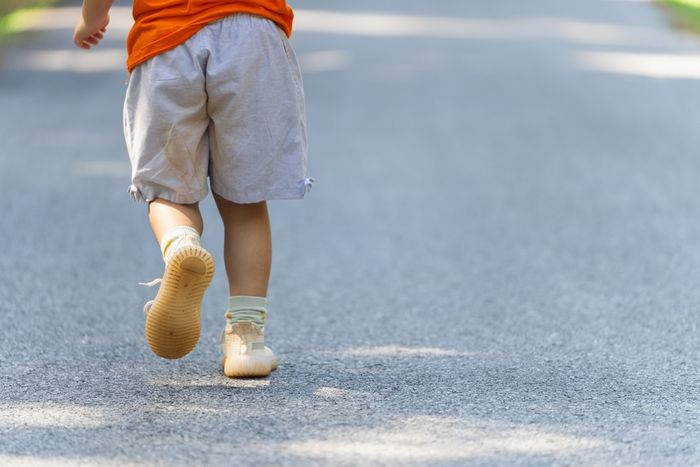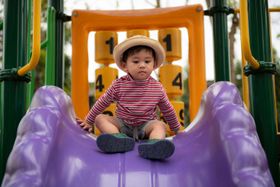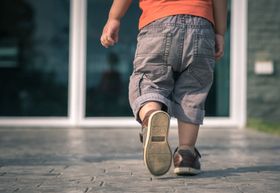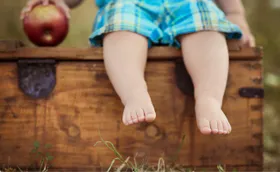How to Determine if Your Child Is Walking Correctly
A guide for parents to identify potential walking issues in their children and take proactive steps to ensure their healthy development.
Published August 19, 2024.

As parents, we often worry about our children's development, especially when it comes to milestones like walking.
The thought of them having problems can be a source of anxiety and stress. You may wonder if their gait is normal, if they are in pain, or if any underlying conditions need to be addressed.
Fortunately, there are several signs and symptoms to look for to determine if your child is walking correctly. These indicators can help you take proactive steps to ensure your child's healthy development.
» Want to prevent walking problems for your child? Try orthopaedic shoes
When Will My Baby Walk? It's Not Just About Age
There is no single answer to this question. It's normal for babies to start walking between 9 and 18 months.
Here are some things that can affect the timing:
- Culture: Some cultures carry babies more often, which might delay walking.
- Muscle Strength: Stronger leg muscles can help a baby walk sooner.
- Practice: The more babies practice walking, the faster they might learn.
» Improve your walking technique by taking short steps with your kid
Key Milestones in a Child’s Walking Development
- Pushing Up: 2-5 months
- Rolling Over: 3-6 months
- Sitting With Support: 4-7 months
- Sitting Without Support: 6-9 months
- Scooting: 7-10 months
- Pulling Up to Stand: 8-12 months
- Crawling: 8-12 months (some skip this phase)
- Walking With a Very Wide Stance: 9-14 months
- Walking With Support: 10-14 months
- Walking Alone: 11-15 months
» Learn how to help your little one walk alone
When to Worry About Your Child's Walking
Here are some of the most common concerns when kids just start walking:
- Late walking: Most children walk by 18 months, but some may take longer. It's not necessarily a problem if they are progressing steadily in other areas.
- Toe Walking: Many children walk on their tiptoes when they are first learning. It's usually harmless and goes away on its own, but you should visit a podiatrist if it persists after they are two years old.
- Awkward Gait: Some kids start out walking with a clumsy and uneven gait. Their muscles are still developing at this age, so this may not be enough to worry about.
- In- Or Out-Toeing: Most children's feet turn inward or outward when they start walking. It only becomes a walking problem when it is excessive and could be a sign of a foot abnormality.
- Bowlegs: A condition where the legs curve outward at the knees, creating a bowed appearance when standing. If the bowlegs are severe or persist beyond the expected age range—usually around 2-3 years old—it may be a sign of an underlying issue.
- Flat feet: It's common for young children's feet to be flat or to have a very low arch. Their feet are still developing, and the arch will likely form over time. As children grow, their feet typically develop more structure.
- Knock-Knees: When the legs curve inward at the knees, creating a knocked appearance when standing. Knees may touch when the feet are kept apart.
- Metatarsus Adductus: A foot deformity where the forefoot is pointed inwards, with the toes and metatarsals (foot bones) angled towards the midline.
» Discover how to prevent foot injuries in your kid
Tips to Identify Potential Walking Problems in Your Child
- Look for progress in other areas, such as crawling, sitting, climbing, and communication. Seek a professional evaluation if your child is delayed in multiple places.
- Check if you have a family history of developmental delays or foot problems, which may suggest a similar predisposition for the child.
- Compare your child's development to their age group, not just other children.
» Recognise the first signs of foot drop in children
Watch Out for These Red Flags
If your child suddenly starts to experience any of the following, it might be a sign of something more serious:
- Sudden or ongoing pain
- Feet turning in or out too much
- Limping
- Losing skills they had before
- Fever, weakness, or muscle problems
Don't wait to see a doctor. If you notice any of these symptoms, it's important to get professional help right away.
» Check out the best exercises for flat feet
Ways to Treat Irregular Walk Patterns in Kids
The following treatment options will solve the earlier listed walking problems in children if they are identified early and action is taken immediately:
Stretching and strengthening exercises for the foot and ankle
Specialised shoes
Physical therapy
Bracing to guide bone growth
Taping or splinting to aid foot alignment
Surgery in extreme cases where deformity has set in before intervention
» Explore the symptoms of flat feet in children
Your Kid Might Need Specialised Foot Support
Orthopaedic shoes—like the ones from First Walkers—provide essential support and guidance for your child's growing feet.
They are designed by experts to address common foot issues in young children, such as flat feet, in-toeing, and out-toeing.
They come with:
- Wide Toe Boxes to accommodate your child's developing feet.
- Arch Support to promote healthy foot development.
- Breathable Materials to keep feet cool and comfortable.
- Flexible and Durable Construction to withstand the rigours of play.
Orthopaedic shoes reduce the risk of serious walking problems later on in life by supporting proper foot development. Your child will be less likely to have bunions, hammertoes, or plantar fasciitis.
Is Your Child Walking Correctly? Spot the Signs and Take Action
Pay close attention to how your child walks. If you notice their feet turning in or out excessively, they’re limping, complaining of pain, or walking unusually, it could be a sign of a problem.
Don’t hesitate to consult with a pediatrician or specialist for a proper evaluation. Early intervention can make a big difference in addressing walking issues and ensuring your child’s overall well-being.
» Prevent walking problems in babies with orthopaedic shoes
Disclaimer: First Walkers' information is intended for educational and informational purposes related to toddler footwear and feet. We encourage you to consider individual circumstances and consult qualified orthopedists about specific conditions.




